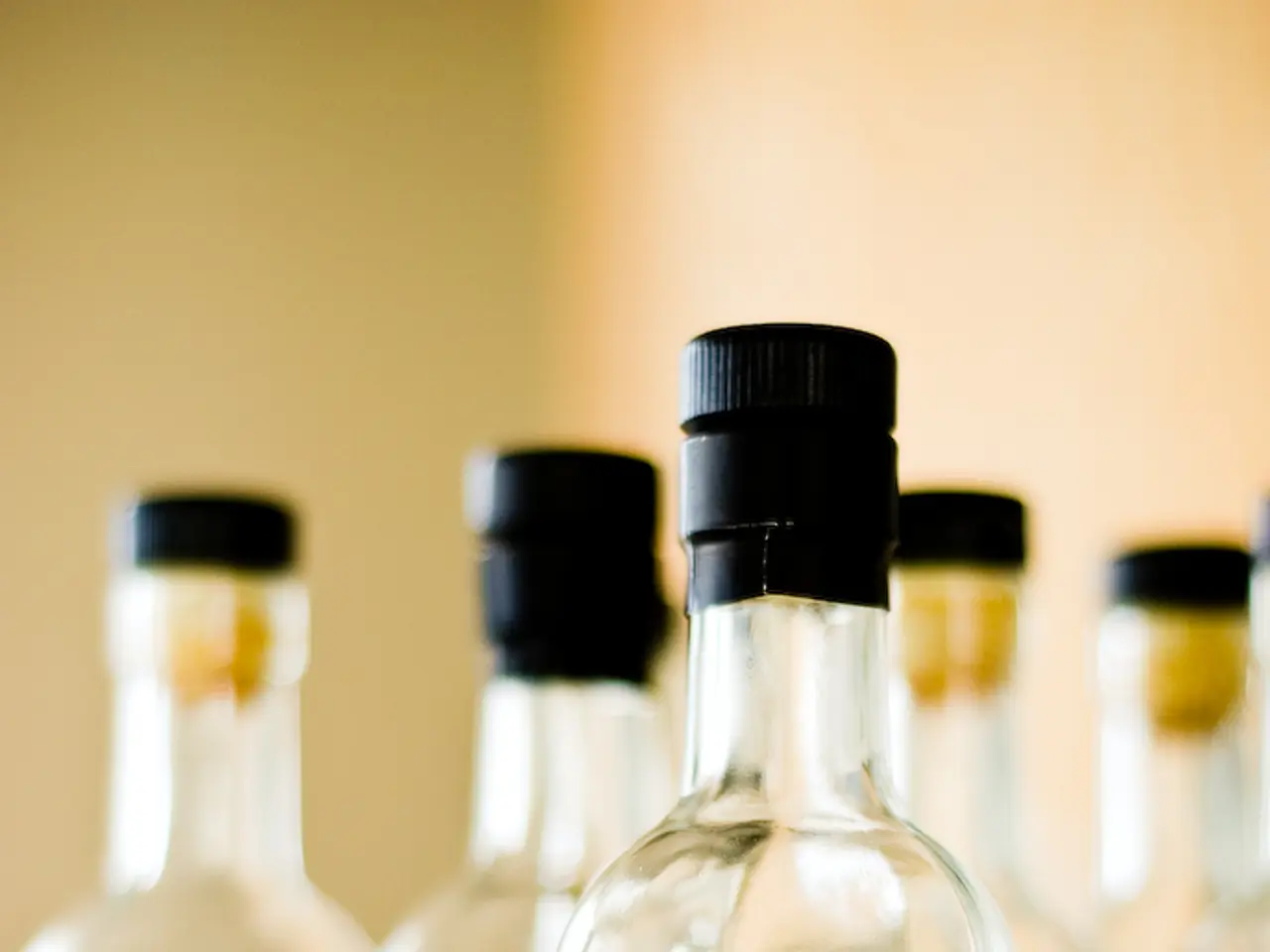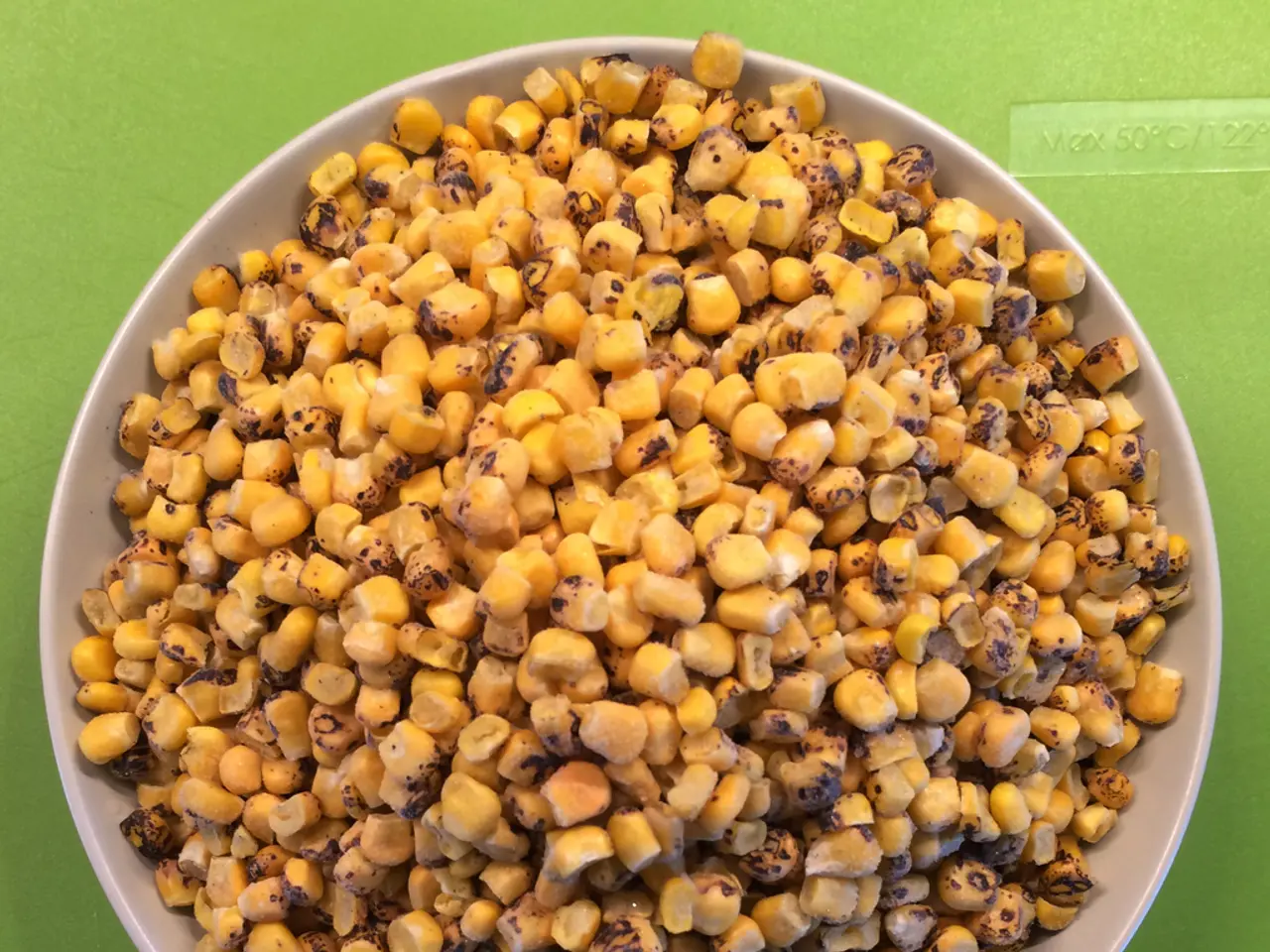Quantity of Alcohol Present in Kombucha Beverage
In the world of homemade kombucha, the alcohol content can vary significantly, and understanding the factors that influence it is crucial. Here's a breakdown of how you can control the alcohol content in your homemade kombucha.
Sugar level plays a vital role in determining the alcohol potential. Using pure cane sugar is recommended. Higher sugar levels will result in a higher alcohol content, so limiting the sugar to 50g per litre can help reduce the alcohol.
Temperature is another key factor. Warmer temperatures speed up fermentation and alcohol production. To produce a low-alcohol kombucha, aim to ferment the sweet tea with the SCOBY (Symbiotic Culture of Bacteria and Yeast) for about 5 to 7 days, maintaining the fermentation temperature around 20-22°C (68-72°F).
Fermentation duration is also crucial. Longer fermentation periods result in lower alcohol content but may reduce sweetness and raise acidity. For a low-alcohol kombucha (typically under 0.5% ABV), a week of fermentation is sufficient. If you're aiming for a higher alcohol content, extend the fermentation to 10-14 days or more.
The yeast present in the SCOBY or added strains also affect the alcohol yield. To increase alcohol content, you can introduce extra yeast strains or conduct a secondary fermentation with added yeast.
Oxygen exposure is another factor to consider. Acetic bacteria need oxygen to convert alcohol into acetic acid. Limiting oxygen during secondary fermentation promotes alcohol retention. This can be achieved by fermenting in airtight bottles.
Monitoring the pH and tasting frequently help ensure the balance between acidity and alcohol. Aim for a pH of around 3.2-2.5. Tasting will help you determine when the balance between acidity, sweetness, and alcohol is just right.
Because homemade kombucha alcohol content can be unpredictable and sometimes exceed 0.5% (the legal limit for non-alcoholic beverages in some regions), testing with an alcohol meter or lab analysis is recommended when exact control is required.
In summary, to make low-alcohol kombucha, keep fermentation short, cooler, and with moderate sugar. To increase alcohol, extend fermentation, increase sugar, increase temperature, and add yeast in sealed containers for secondary fermentation. A more radical solution to reduce alcohol content is to produce a sugar-free kombucha. The initial amount of sugar in kombucha can determine the potential alcohol content. A container with a wide opening allows better air exchange and less alcohol, while a well-ventilated room can result in a lower alcohol content.
Science plays a significant role in health-and-wellness, and understanding the factors that control the alcohol content in homemade kombucha can be crucial for those following a lifestyle focused on food-and-drink. The sugar level, temperature, fermentation duration, and the presence of yeast all influence the alcohol yield. For a low-alcohol kombucha, using moderate sugar levels, maintaining cooler temperatures, and limiting the fermentation duration are recommended.




